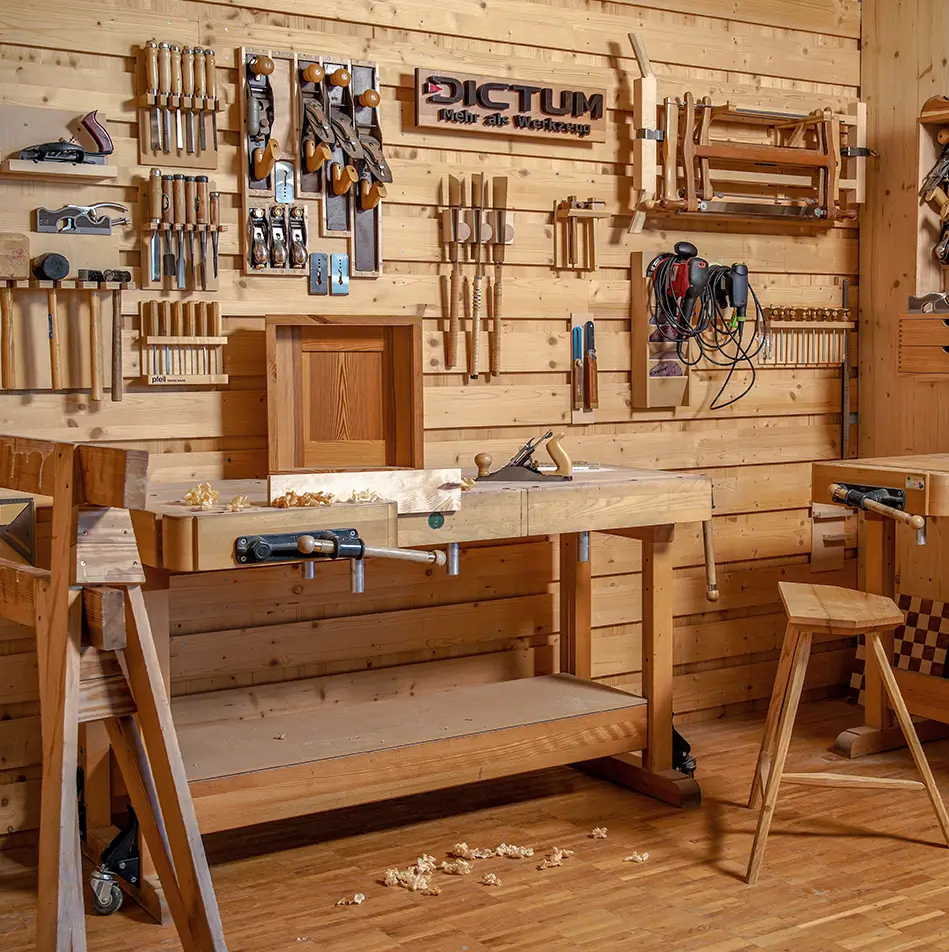
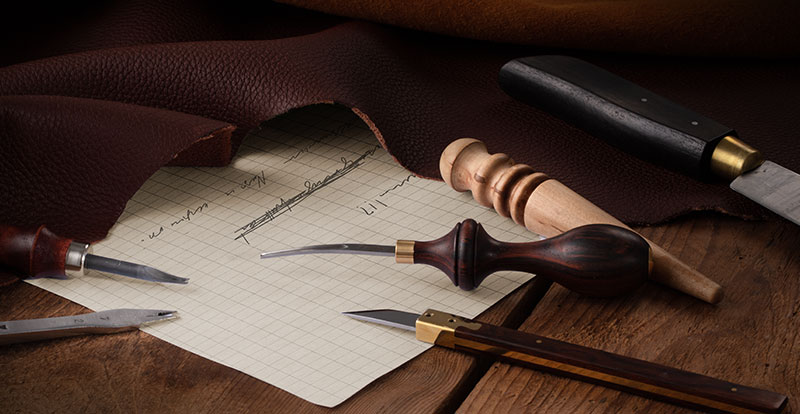
Leatherworking, papercraft & upholstery tools
Leatherworking, papercraft & upholstery tools
EXPERT KNOWLEDGE LEATHER TOOLS / PAPER AND UPHOLSTERY TOOLS
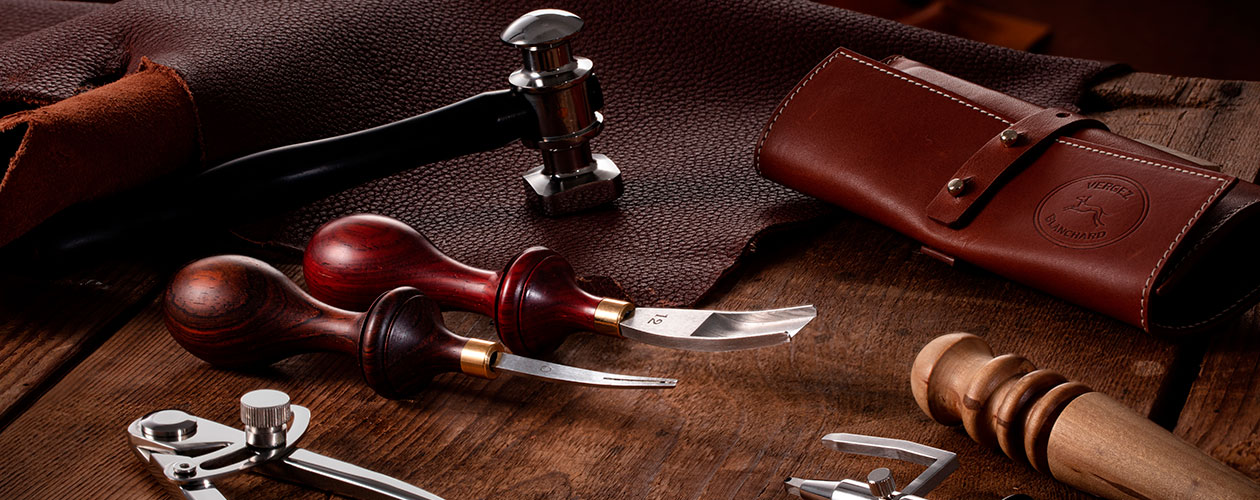
Which leather tools to buy - what should be included in the basic equipment?
You only need a few tools to get started with leatherworking. Whether you want to make sheaths for knives or a stylish belt, a practical handbag or a small leather case, you don't need a lot of space for this hobby and only a few selected leather tools. Here are a few suggestions:

- Work base: You need a suitable base for cutting leather. A so-called cutting mat is best suited for cutting with a cutter, rotary cutter or half-moon knife. A hardwood block or a cutting board is recommended for punching and punching holes with a punch and pricking iron. A hardness and smooth base, such as a polished granite or marble slab, is required for sharpening and splitting Leather with splitting knives, crescent or bevelled knives and for punching.
- Marking and transferring: A round awl or a leather marking pen (a so-called silver pen) is suitable for pre-marking and marking on Leather. Ballpoint pens are unsuitable as their ink will penetrate deep into the Leather over time and emerge as unsightly stains on the opposite side. Parallel lines, e.g. for seams, and repeating distances, e.g. for belt holes, can be marked with a pointed compass.
- Cutting: Various knives are suitable for cutting. A good cutter knife is usually sufficient to start with. If you want to do more, it is worth buying a half-moon knife or leather knife. Lengthy, straight cuts are best made along a steel ruler. A belt cutter makes it easier to cut belts and leather straps.
- Punch holes: For belt holes, rivets and press studs, good hole punch pliers or rivet pliers are usually sufficient. However, you can only work close to the edge of the workpiece with these. You will need punching irons for punching holes in the surface.
- Edge processing: To ensure that the edges do not fray in the long term and remain attractive, they are rounded and polished using an edge planer. You can easily polish the leather edges with water and a linen cloth. This is quicker and more durable with polish (e.g. Toko Pro) or Leather edge wax and a wood edge polisher. A folding bone is also a suitable leather tool for this, and you can also use it to work in so-called "Beistriches", parallel lines to the edge.
- Joining: There are several methods for joining leather parts, for which different leather tools are required.
- Glues: Leather parts are usually glued together before they are permanently joined. You can use leather adhesives, contact adhesives or white glue for this. Contact adhesive has the advantage that the parts adhere very quickly and do not need to be pressed for a long time.
-Sewing: As a rule, the seams are marked with a seam marker or pointed compass and pre-pierced with a pricking iron. There are many different stitching techniques for leather. The traditional saddler's seam, which is sewn with two leather needles, a round awl and a sword awl, is very durable. In order to have both hands free for sewing, the workpieces are held in a so-called sewing clamp.
-Rivets: is a very simple and robust method of quickly joining leather parts together. When used correctly, rivets are also very decorative. Make sure that you use a rivet setter or suitable rivet pliers that match the rivets. Always use a soft-face hammer or rawhide hammer to hammer rivet setters, as well as punches, punching irons and embossing irons, in order to protect the leather tools. - Hallmarking and embossing: Leather can be embellished by hallmarking like almost no other material. The sometimes very elaborate patterns and ornaments are pre-cut with a so-called swivel knife and then the shapes are worked out with different punching irons.
- Surface and leather care: Vegetable tanned leather (also known as pale leather) can be coloured using simple means, e.g. leather dyes or spirit stains. You should always treat your finished leather objects with leather care products such as leather grease, leather balm or leather milk to protect them from stains and keep them supple.
How can I care for leather tools properly?
Most leatherworking tools are very robust and require little maintenance. As a rule, it is sufficient to remove any leather and adhesive residue from the punching irons, steel rulers, rebate bone, etc. and clean them after work. However, it is important to handle all cutting leather tools with care, as the blades of leather tools are very sharp and comparatively sensitive. This is mainly due to the usually acute cutting angle, which is only 15° to 20° for crescent and bevelled knives, for example. Therefore, make sure you use a suitable base when working (see above) and protect their blade with a leather sheath or holster (these are also great projects for starting out in leatherworking!). Sharpen the blades regularly and in good time - working with a sharp blade is easier and much safer than using a blunt leather tool.
Where can I learn leatherworking?

In line with our motto "More than just tools", we not only offer you high-quality leather tools, but also various courses in which you can learn how to work with them. In our "Basic leatherworking course", you will learn everything you need to know about this versatile hobby, from the material leather to different sewing techniques. You will make small practice pieces and can realise your first leather objects. In the "Leather belts " course, you will cut the leather belt yourself and will no longer be reliant on ready-made goods by the metre. You will learn the traditional saddler's seam and find out what influence the buckle, bridge and loop have on a belt. In special courses such as "leather braiding", you will learn decorative techniques for the production of dog leads, bridles or jewellery made from endless straps. We also offer special courses for knife sheaths and Veste pour homme Dry Wax ". Find out more in our "Courses > Leatherworking" section.

Looking for leather hides, leather straps, blanks and kits?
In our "Materials > Leather" section you will find naturally tanned leather hides (whole and half hides) such as cowhide, buffalo leather or Heidschnucken leather as well as leather straps, goatskin braided straps, leather cuttings for belts and knife cutting as well as kits for bags and purses.
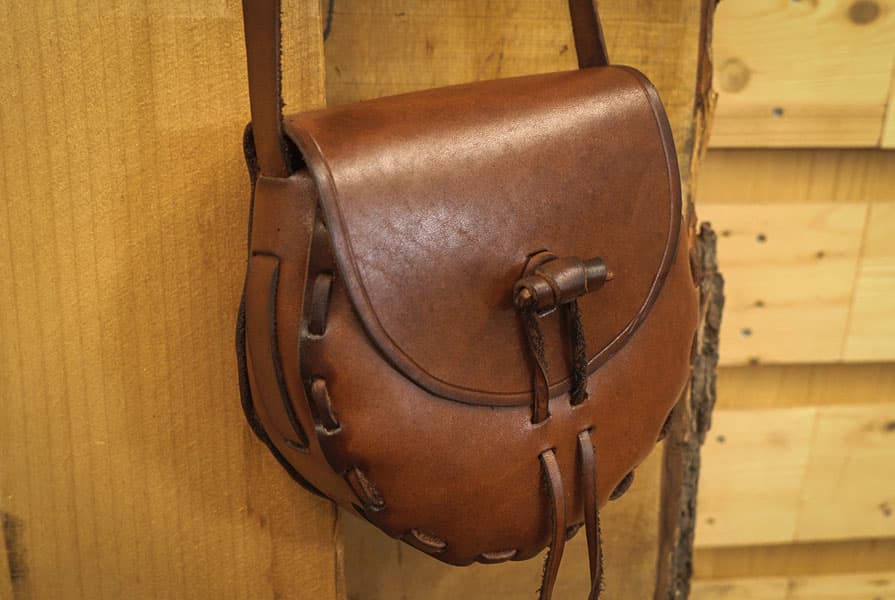
Hunting bag made entirely of Leather
This leather bag is an ideal beginner's project as it can be realised with just a few tools and a single material, leather. Depending on your experience and skill, you will need about a day to complete it. In our "video tutorial", DICTUM® course instructor Heiko Pulcher demonstrates all the work steps in detail.
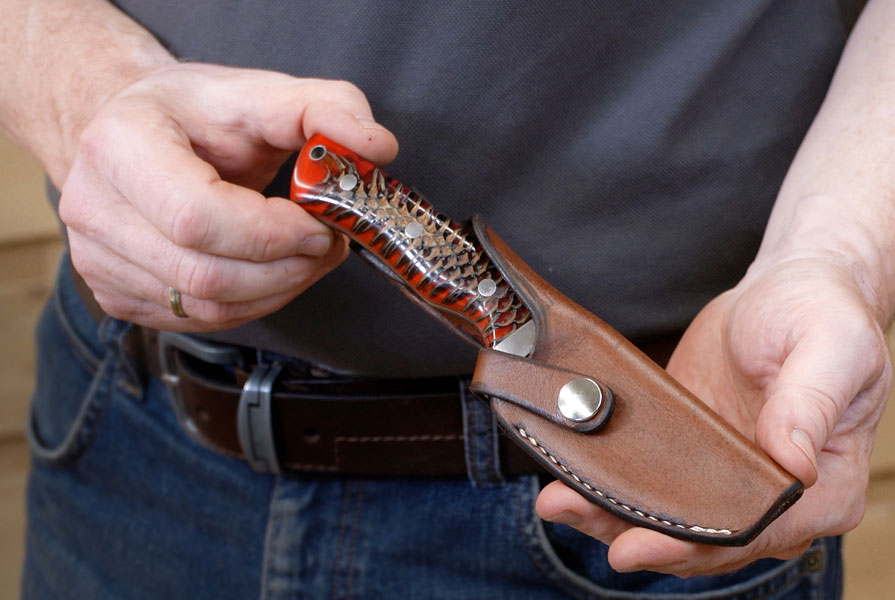
Design and build your own knife sheath
A customised sheath is part of a self-made knife. This should match the function and appearance of the knife. We give you tips on how to develop your own knife sheath from scratch and what you should bear in mind when building the prototype.

























